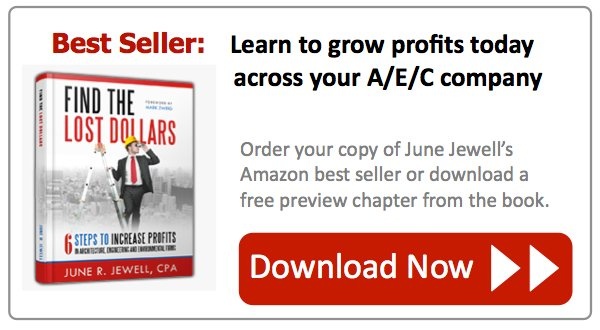Doug Wendt is a co-founder and senior partner with Wendt Partners.
 Professional service firms, like all B2B/B2G enterprises, need to build a sustainable model of business development. A sustainable model is one that is consistent, well formulated, complete, and easily implemented or replicated across the company. Sustainability is also critical as firms transition through growth stages, such as adding new offices; acquiring other firms; or integrating new service areas into the company's practice.
Professional service firms, like all B2B/B2G enterprises, need to build a sustainable model of business development. A sustainable model is one that is consistent, well formulated, complete, and easily implemented or replicated across the company. Sustainability is also critical as firms transition through growth stages, such as adding new offices; acquiring other firms; or integrating new service areas into the company's practice.
For firms in the architectural, engineering and environmental space, sustainable business development helps guide the firm through challenging shifts in the marketplace; enhances its visibility and 'top-of-mind' presence in its target markets; and provides a foundation for stronger value in pricing and proposal development.
Finding the Lost Dollars
Industry-leading strategy expert June Jewell, CPA describes this process as part of "Finding the Lost Dollars", a comprehensive approach that she has developed through her work with more than 700 companies in the professional services industry. As the President & CEO of Acuity Business Solutions, Jewell has been a regular speaker for ACEC, AIA, SMPS, DCN, CREW and Deltek Insight among other forums.In her groundbreaking book, Find the Lost Dollars: 6 Steps to Increase Profits in Architecture, Engineering and Environmental Firms, Jewell identifies ten culture traps and nine areas where money gets lost, plus 6 critical steps that A&E firms need to follow in order to achieve sustainable growth. Two priorities that directly impact business development are strategy and systems, both of which represent critical best practices for successful firms.
Steps to an Effective Strategy
Strategy is one of the most misunderstood aspects of modern business leadership. Too often, a company's strategic plan - if one exists - consists of nothing more than a list of tactics, organized and indexed into a single document. This amalgamation of ideas, however, ultimately lacks the answers to key questions that will define a clear direction for the business. Points that an effective strategy should answer include:
1. The mission, vision and values of the firm
2. Business objectives of the company
3. Market opportunity analysis (both the markets to target, and the markets not to)
4. Capabilities and business opportunities
5. SWOT analysis (strengths, weaknesses, opportunities & threats)
6. Detailed marketing plan
7. Contract pursuit priorities
8. Priorities for future milestones (organic growth, acquisitions, owner transitions, exit)
That last priority is as critical to the company as the first, because a business that has not clearly charted its course through future changes and identified what the personal objectives of its owners are, will not be able to make agile decisions when faced with new opportunities (a longstanding competitor in a complementary market unexpectedly becomes available for sale), or new challenges (one major market segment faces economic decline and another emerging segment requires new talent to exploit).
Too often, firms task their marketing and business development teams with "going after revenue" but do not define what kind of revenue is the best to go after; how to craft proposals that maximize profit potential; or what warning signs to use when qualifying the firm into or out of specific possible project pursuits. All of these points of risk can be addressed through an effective business strategy.
The Power of Integrated Systems
Alongside strategy, a sustainable sales process in the professional services space also requires dynamic, integrated systems. In the past, many business owners and executives considered enterprise software as a technology to take care of everything "after the order" -- project costing, staffing, operations, resource management, accounting, payroll, and more. Today, however, the "before the order" (and between the orders) systems are as critical to your overall success.
An integrated sales and marketing platform, anchored by a dynamic customer relationship management (CRM) system, will allow your business development team to build, grow, track, maintain and - most importantly - deepen, key relationships. At the user level, CRM has very clear benefits to each professional in the firm. It provides a centralized database of the people and relationships at prospect and customer organizations including conversations, correspondence, documents and updates.
It also allows each person to maintain an electronic record which can remind them of upcoming meetings, track pending tasks, and keep 'tickler list' priorities top-of-mind. You can build your strategy around the CRM platform, or you can integrate with ERP if your enterprise software offers a leading-edge solution, such as Deltek Vision CRM.
Beyond that, an effective CRM platform can give your team the right processes, workflows and analysis tools necessary to truly build a sustainable business development model – especially when integrated with marketing automation technology, such as HubSpot.
Use activity histories and account information to automatically prioritize relationships to ensure that key contacts receive 'high touch' attention. Analyze data to look at trends in what A&E executives are reading, following and sharing online. Automate follow-ups so that a person who downloads your white paper on one solution receives an offer for a more comprehensive guide on a related topic. Use workflows to move customer questions or prospect discussions through the right teams and personnel. All of these possibilities are part of the equation when a systems approach is applied to business development.
Other Key Components
Strategies and systems are two of the most powerful tools in the business development toolbox. Other components include the right ingredients in your organizational culture; a dynamic and integrated marketing strategy; and a positive professional development and sales training regimen. By focusing on the ingredients of a sustainable sales process, you will start "finding the lost dollars" and creating new growth opportunities for your professional services firm in the midst of a dynamic and changing economy.
Our thanks to June Jewell, CPA, President & CEO of Acuity Business Solutions, for sharing some of the key best practices featured in her book, Find the Lost Dollars. Learn more about the book June wrote, click the button below.
Image credit: PlanetofSuccess (Flickr @ Creative Commons)







